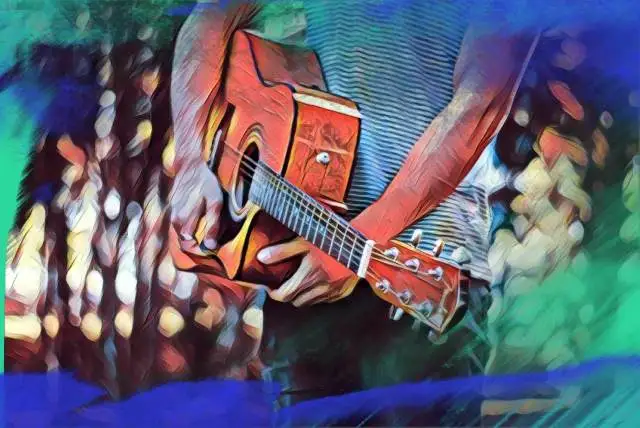Emotions. Mariah felt them; Whitney was overwhelmed by them. Whatever style of music you write, nailing the emotion of a song is key to engaging with, and having an impact on, your audience.
Many elements go into creating the emotional identity of a song - instrumentation, lyrical content, artistic performance, to name a few. But one of the most immediate ways to inject emotion into music is through your choice of chord progression, and that’s what we’ll be looking at today.
By the time we’re done you’ll be armed with a library of emotionally-charged chord progressions to enhance your songwriting chops, along with some nifty tips and tricks to make any chord progression more emotional.
Chords: A Quick Guide
Having even a little knowledge of music theory can be super helpful in understanding how the following chord progressions work. But if you fell asleep in music theory class don't panic - here's a quick overview .
What is a Chord?
A chord is formed by playing three or more notes from a given scale simultaneously. A chord gets its name based on the root key and 'flavor' - generally major or minor.
Sometimes you see numbers after a chord name, like C7 or F9. These refer to ' extensions ', which are additions or substitutions that add a different color to the sound.
How to Make a Chord
Figuring out what notes are in a basic triad is actually very simple using a keyboard!
Let's say we want to figure out how to play a C major chord. Firstly, take the root note - C in this example - then count 4 half steps up from there to get your next note (called the third, based on it's scale degree). This gives us E.
Finally, count up 3 half steps from there to get your final note (called the fifth) - G.
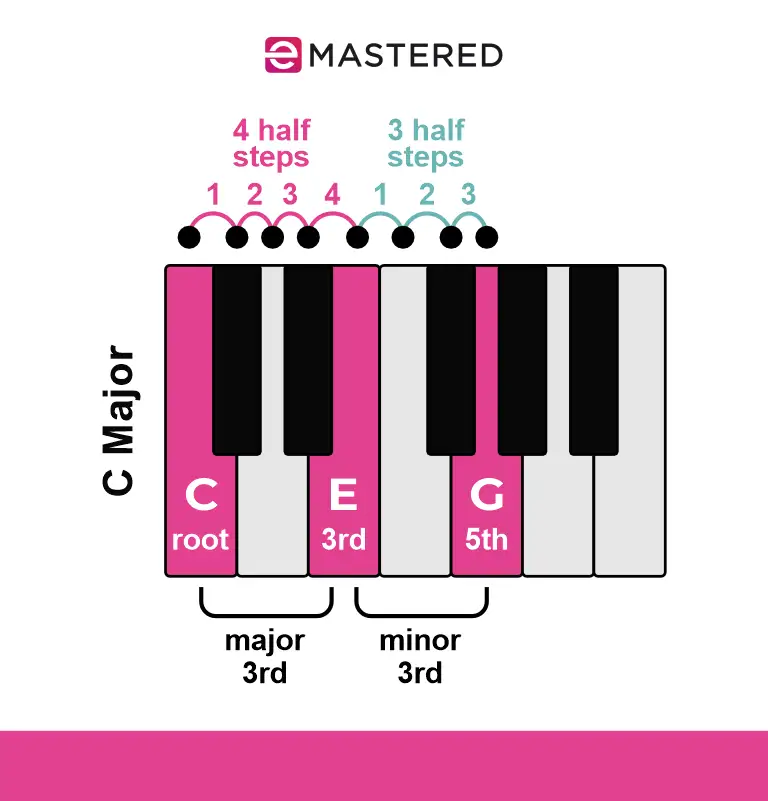
For minor chords, simply reverse the steps, counting 3 half steps to get the third (Eb), and 4 half steps to get the fifth (G).
Numbering and Naming Chords
Chord Symbols
Symbols are a handy way to jot down chord progressions and make it easy for musicians to decode the chords. The name is based on the root of the chord, so a C major chord would simply be written: C. To show a minor chord, add an 'm' after the root. So for C minor we'd write Cm.
A typical chord progression written out this way might look like this:
C - F - Am - G
Roman Numerals
The above method is an absolute way of describing the progression; it's locked into the key of C. Using a numerical system to describe chords relies on the relationship between each chord and the scale degree its based on, so will be the same no matter what key you're playing in..
The Roman Numeral system uses upper case letters to indicate a major chord , and lower case for minor chords. Here's the chord progression from above written out as Roman Numerals:
I - IV - vi - V
For clarity I'll be using both methods to describe the chord progressions in this article.
Common Chords in Every Song
It goes without saying, in Western music there's any number of possible chord progressions available to the daring songwriter. But there's some chords that are common in songs across all genres.
The One
The One (I/i) is based on the first degree of the scale. This could be a minor or major triad, depending on whether you're in a minor key or a major one. This chord feels like home.
The Five
The Five (V) is (not surprisingly) based on the fifth degree of the scale. Often, but not always a major triad, it brings a sense of expectation and tension to a progression. Designed to flow naturally into the tonic chord (the 'one'), you can create a sense of surprise by following it with a IV or vi chord, or something else entirely.
The Four
A good friend you can always rely on, the Four (IV) will take you anywhere you want to go.
The Six
The Six (vi/VI) is a useful tool for songs. In major keys, it's typically a minor triad (vi), and vice versa (VI). But you know, rules are made to be broken...
Emotional Chord Progressions: A Definitive List for Every Musician
Common chord progressions are, well, common in popular music because they've been proven to hit the right tone.
The following list is by no means an exhaustive one, but it contains some classic progressions that have been used in emotional songs across many genres.
I'll be writing out each progression using both the Roman numeral system, and chord names based on the C major scale. There'll also be an audio example for each one, also played in C. This will include the basic triads, followed by a fuller voicing.
Let's roll!
The Classic
Our first progression is also known as the doo wop progression.
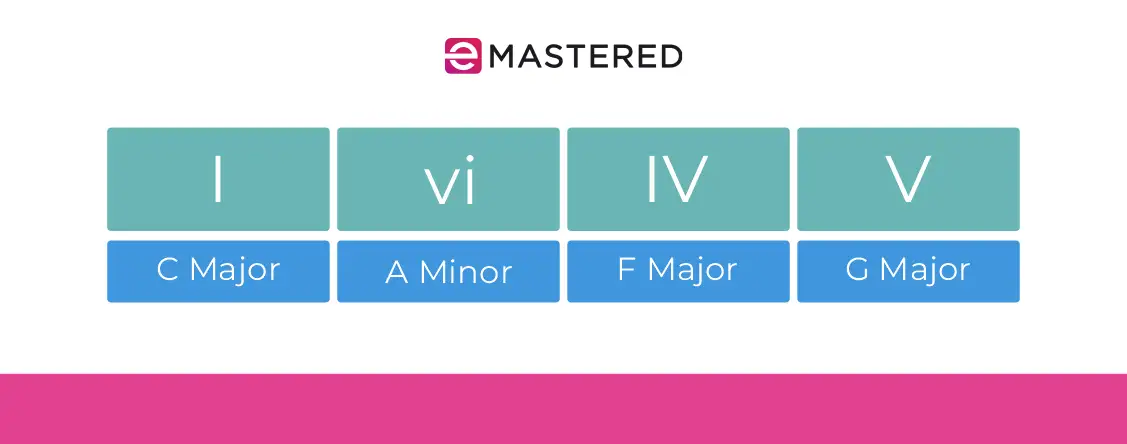
This I-vi-IV-V chord sequence is probably most well known from the song Unchained Melody. It was used a lot in the early days of pop music, and is less common nowadays.
For some variety, try staying on the major IV chord at the end of the progression, or go further and make it a minor chord (Fm/iv).
The Epic
This popular progression also uses mostly major chords, and forms the backbone to classics like Let It Be.
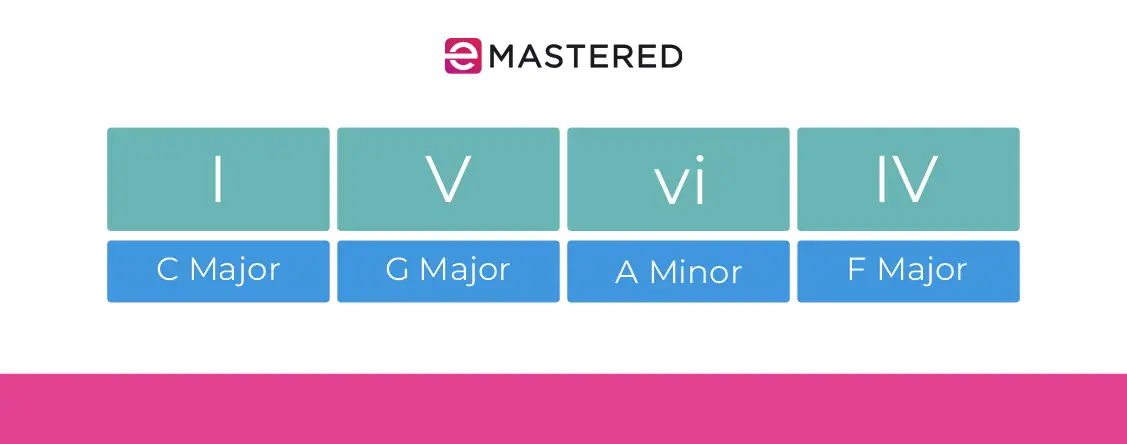
The thing about chord progressions is that if you start in the middle of the progression it can sound completely different. Here are the same chords in a different sequence:
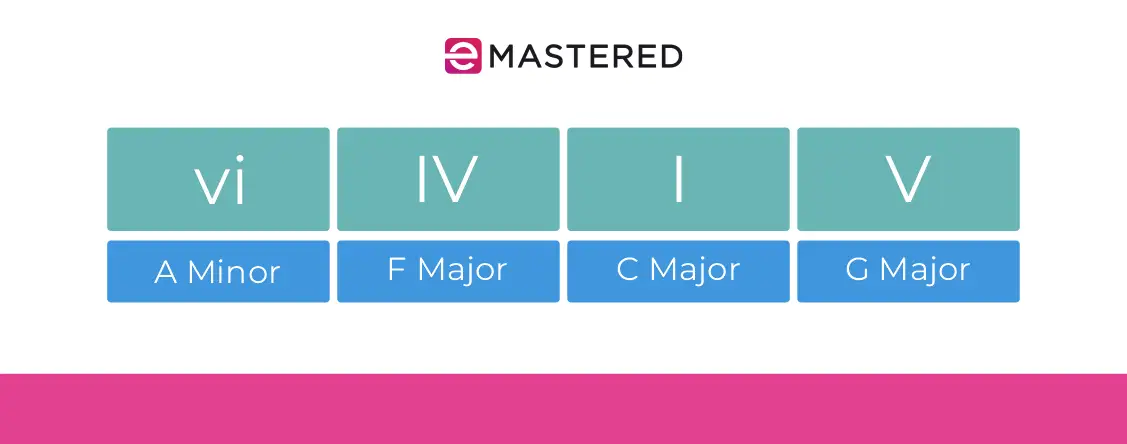
Moving the starting point across a couple of chords still sounds epic, but the vi-IV-I-V sequence has a different flavor.
The Jubilant
This great progression uses only major chords, but still manages to create tension, thanks to the raised fourth of the scale on the second chord.
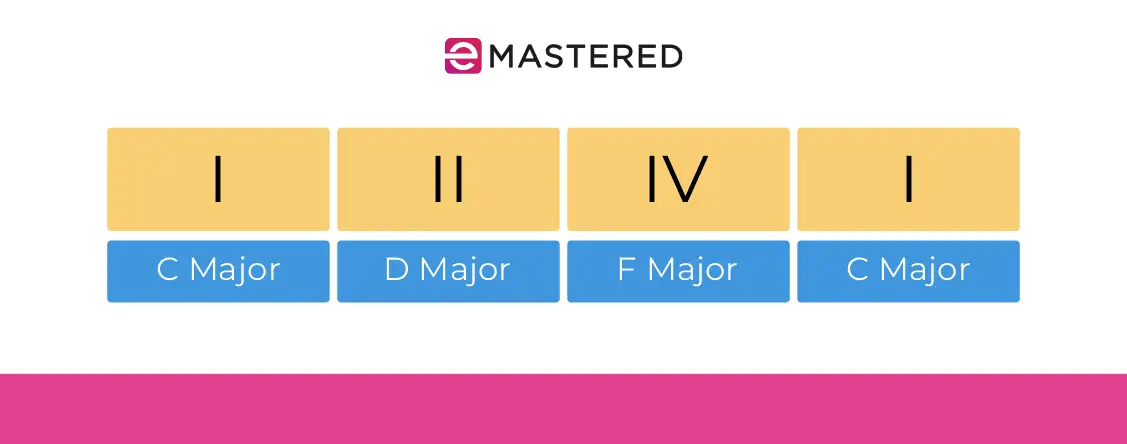
This progression can be heard on CeeLo Green's triumphant Forget You. It's instantly recognizable thanks to the major II instead of the more traditional minor ii, so you probably don't want to go using it as is.
But start on the second chord, and you get something that's still jubilant, but less likely to lead to a lawsuit:
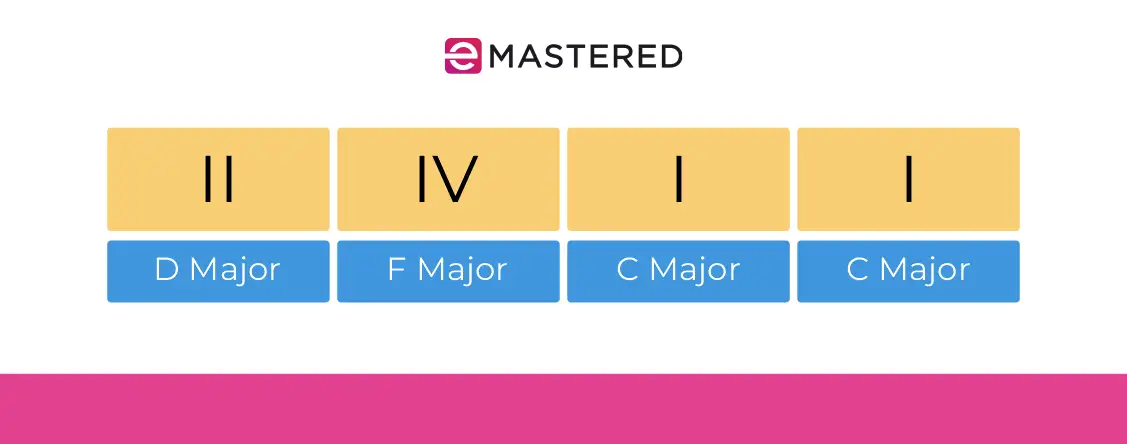
Technically, the key signature if this progression is actually D major, so it should be written I-bIII-bVII. But we're not here to discuss semantics; we're here to find cool sounds. Onwards!
The Riser
Another beautiful progression that only uses major chords but still conveys strong emotions:
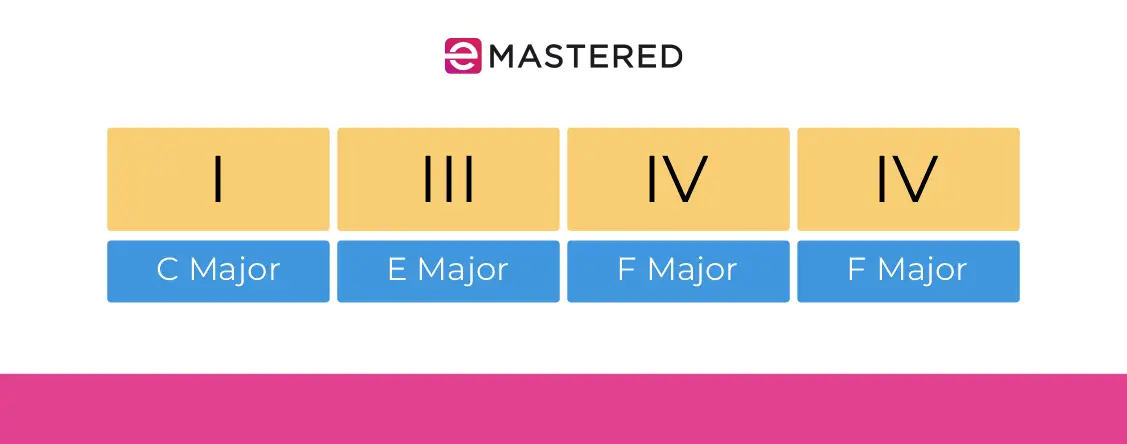
What's powerful about this progression is the major III triad. Typically, the chord based on the third degree of the scale gives us a minor iii, but changing it to a major triad creates soooo much tension, and - dare I say it - sadness.
For extra flavorista change the final chord to a minor triad (F minor in this case). You can hear this to great effect on Radiohead's Creep .
The Canon
Next on our list of chord progressions, we turn to classical music for inspiration. The harmony in this sequence is taken from Pachelbel's Canon in D major:
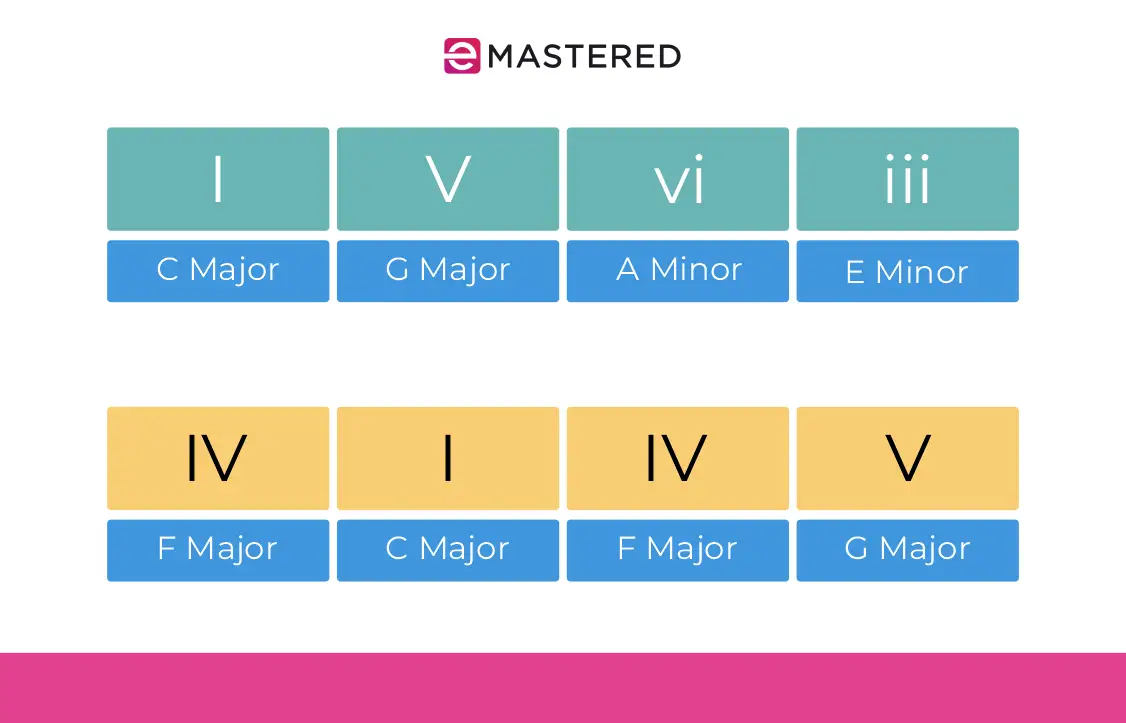
This mighty progression has been used by the likes of Oasis and Belle & Sebastian to inject both sadness and a sense of dignity into songs. I think the sad sound comes from the V-vi-iii movement in an otherwise major chord progression.
As far as chord progressions go it's a long one, but once you've mastered it try substituting chords in the progression to see how that affects the sound.
The Battlefield
This is one of my favorite sad chord progressions!
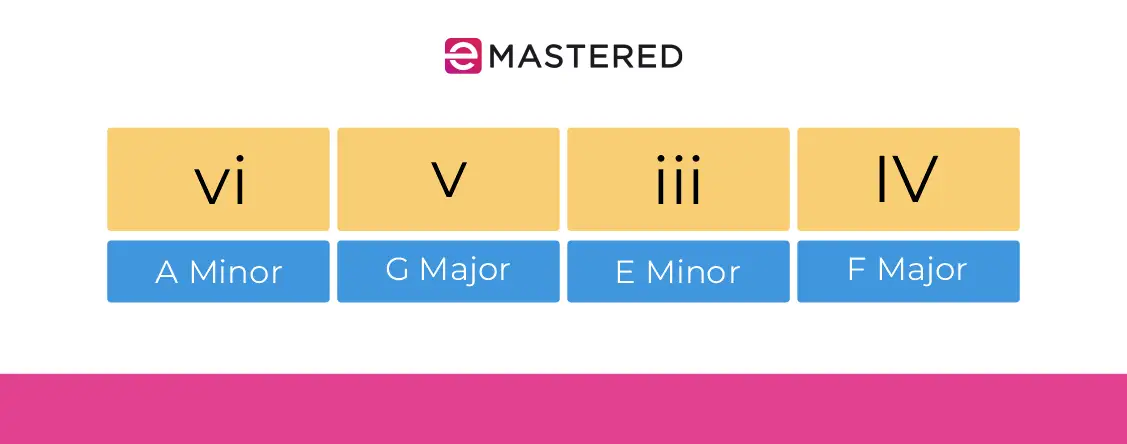
It's a particularly effective yet simple progression interspersing a sad chord with a more uplifting one, to create ongoing tension.
Because we're keeping everything in the key of C this starts off on the minor vi. But if you look at it from the perspective of minor chord progressions it would read:
i - bVII - v - VI
The Restless
Here's another one of our sad chord progressions that creates a sense of perpetual motion.
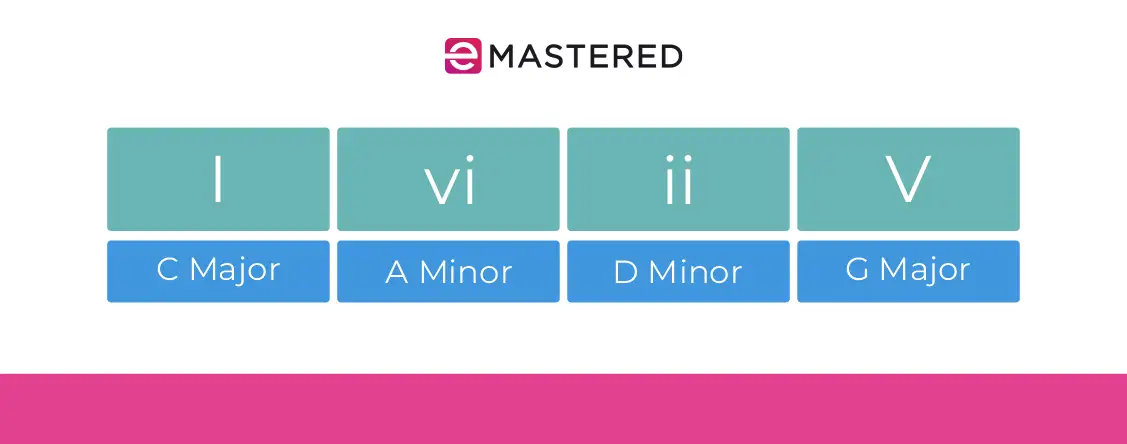
The I-vi-ii-V progression never settles anywhere for long and so can be used to create a feeling of restlessness, without being overly sad.
The Cool
Here's a progression that emanates a certain amount of coolness:
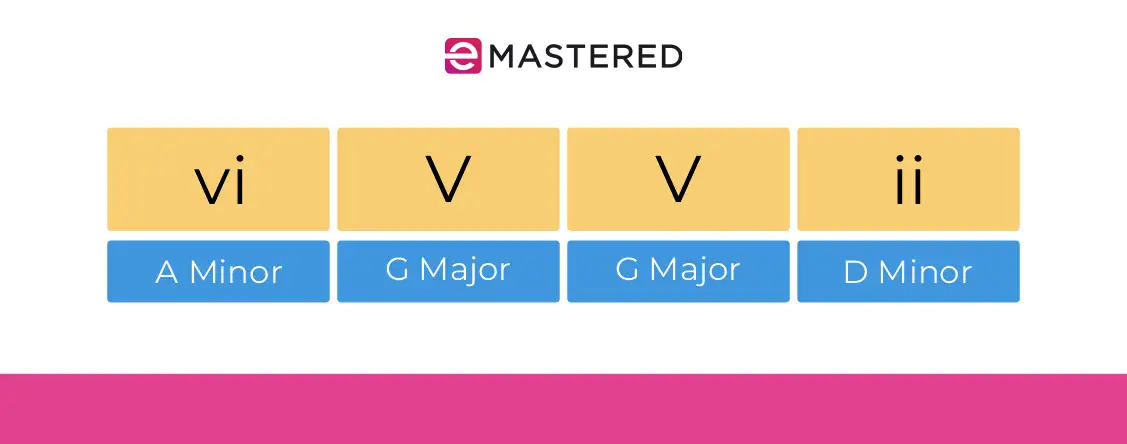
Great for subtle pop or lo-fi emotions, this progression relies on the minor ii to take on the role of the sad chord.
The Falling
Finally, the ultimate sad chord progression! Here it is in it's most basic form:
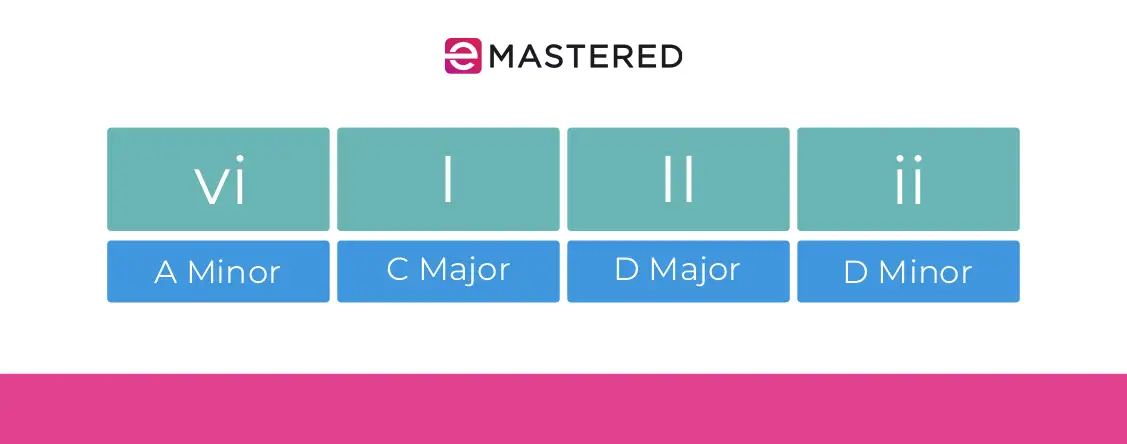
As it stands, it sounds similar to House of the Rising Sun. But change the notes the bass plays and you have something more like the Beatles' classic While My Guitar Gently Weeps:
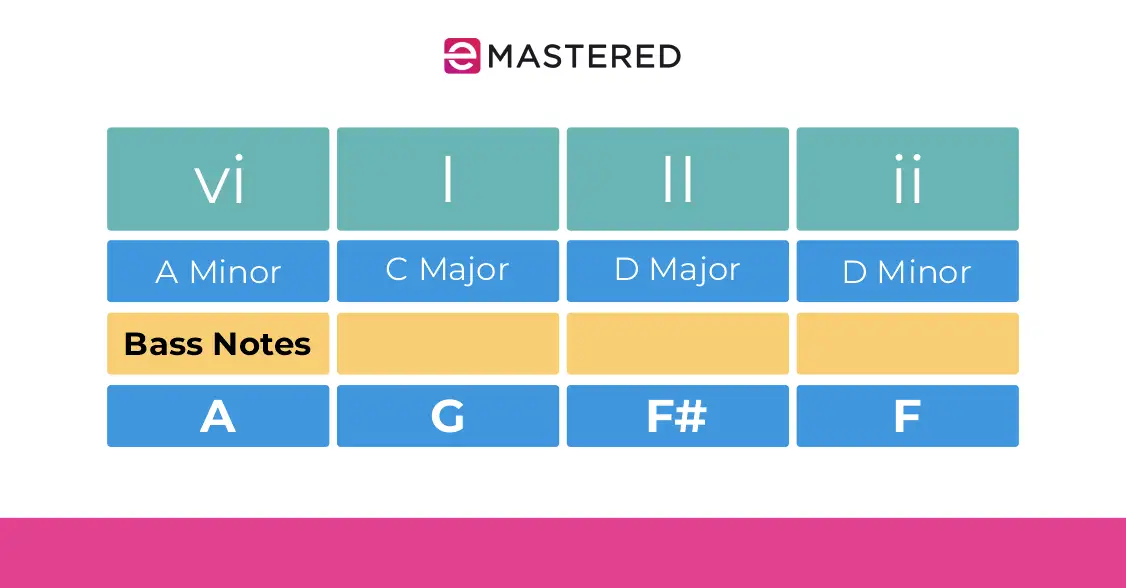
And therein lies the magic trick to writing chord progressions ; changing the bass note can make a world of difference to the sound.
Tips for Creating Emotional Chord Progressions
The above list is only the tip of the iceberg when it comes to sad chord progressions. Here's some tips to help you build on them, and create your own:
Experiment with inversions
An inversion is when you take the notes of a triad and play them in a different order. A C major triad is played C-E-G. Play it E-G-C, and you get a new sound color.
In all the audio examples above, the second progression uses inversions to create a new sound.
Inversions can be really useful for certain progressions. A vi-IV in C major (Am - F) sounds much better when the F triad is inverted, going from A-C-E to A-C-F.
Mix It Up
Always ask yourself 'what if?' when working on a progression. Start at a different point in the sequence, or try switching out one chord for another.
The Bass Has It
Probably the most important rule for building sad chord progressions! The note the bass plays does not have to be the bottom note of the chord, or even part of the triad itself. Use your ear, and see what works for you.
And remember, instrumentation and melody will play a key role in determining the emotional quality of your songs. Now go forth and maketh the sad music!


